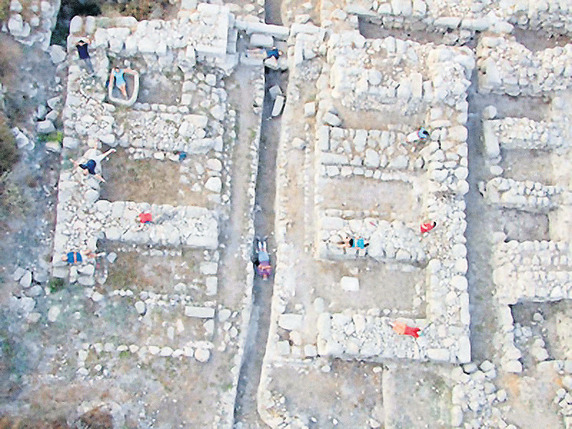Old Gezer
The last few months have seen an extraordinary number of archaeological discoveries that shed light on the biblical record.

As the dust settles (quite literally!) it will become clearer what may have been misinterpreted and what really adds to our understanding of Scripture. But there is no doubt that the ever-growing wealth of material continues to remind us that confidence in the historicity of Scripture stands up to scrutiny.
Solomon’s palace?
In the light of excavations this year, excavators have announced indications that they have found remains of a palace built by King Solomon.
Tel Gezer is a site west of Jerusalem, guarding the route from the Philistine coastal plain into the central hill country. As such a strategic location it was subjected to much conquest, destruction and reconstruction during ancient history. Since the 1960s archaeologists have been exploring the 33-acre site and unearthing many finds of great importance.
Of course, we still lack an inscription bearing the name of King Solomon from the era. Who knows if one will ever be found? But recent discoveries bring such a possibility tantalisingly close.
Solomonic gates
1 Kings 9.15-17 describes the importance of Gezer to King Solomon. It was one of the cities he fortified, along with Megiddo and Hazor. Of great interest to archaeologists is the distinctive six-chambered gate which all these three cities have. Not surprisingly, they are simply called ‘Solomonic gates’ by the scholars. Dating to the period of the unified monarchy, their existence speaks of a common architect, central planning and enough wealth to build on this scale.
Common architectural features imply a common architect. Central planning is indicated by the distance between Hazor and Gezer, pointing to the period of the united monarchy. Add to this the wealth involved in carrying out such an extensive building programme and all the signs point to these being the legacy of King Solomon.
Shishak’s invasion
Now there is more! The latest excavations at Gezer have confirmed that the monumental structure found there was a palace also dating to the tenth century BC. The city itself had been destroyed immediately prior to this building work, as demonstrated by a layer of ash – an event referred to in the Bible (1 Kings 9.16). After this, the massive new construction began in the era of King Solomon.
Features of the building include courtyards and a number of smaller rooms not in keeping with ordinary domestic dwellings. The building itself suffered violent destruction in c.925 BC, which would also corroborate the biblical account of Pharaoh Shishak’s invasion (2 Chronicles 12.2-4). The facts on the ground fit the account we read in the Bible.
Yet there remains a need for caution in the claims that we make. There is no direct evidence so far that King Solomon lived here and scholars still await carbon dating from recent excavations. But the evidence continues to point in favour of the historicity of the biblical account. Yet again, when the archaeologists dig, discoveries continue to emerge that are in keeping with the record faithfully handed down in the Bible.
Chris is the D.L. Moody Lecturer in Apologetics, Moorlands College.



